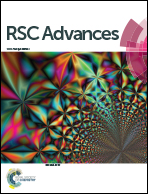Pit evolution around the fusion line of a NiCrMoV steel welded joint caused by galvanic and stress-assisted coupling corrosion
Abstract
The corrosion of NiCrMoV steel welded joints is performed in an aqueous solution of 3.5 wt% NaCl at 180 °C in a container at a pressure of 0.8 MPa. The specimens in the shape of cylindrical tensile rods are immersed in the aqueous solution under the action of tensile stress in a range of 0 to 0.9 of the yield stress of the base metal. The experimental results suggest that there is macro-galvanic corrosion in the welded joint with the coarse-grained heat affected zone (CGHAZ) as anode due to the highest corrosion susceptibility of the CGHAZ. The CGHAZ has the highest positive current density in the welded joints as measured by the scanning vibrating electrode technique. The two-parameter Weibull distribution function, which is represented by the Weibull modulus and characteristic strength, is used to analyze the distribution of the depth of pits at different immersion times. Both the Weibull modulus and characteristic strength are calculated, and found to be dependent on the applied tensile stress. The values of the characteristic pit depth and the average pit depth reveal that there are two mechanisms controlling the corrosion of the NiCrMoV steel welded joints; one is galvanic corrosion, and the other is stress-assisted corrosion.



 Please wait while we load your content...
Please wait while we load your content...